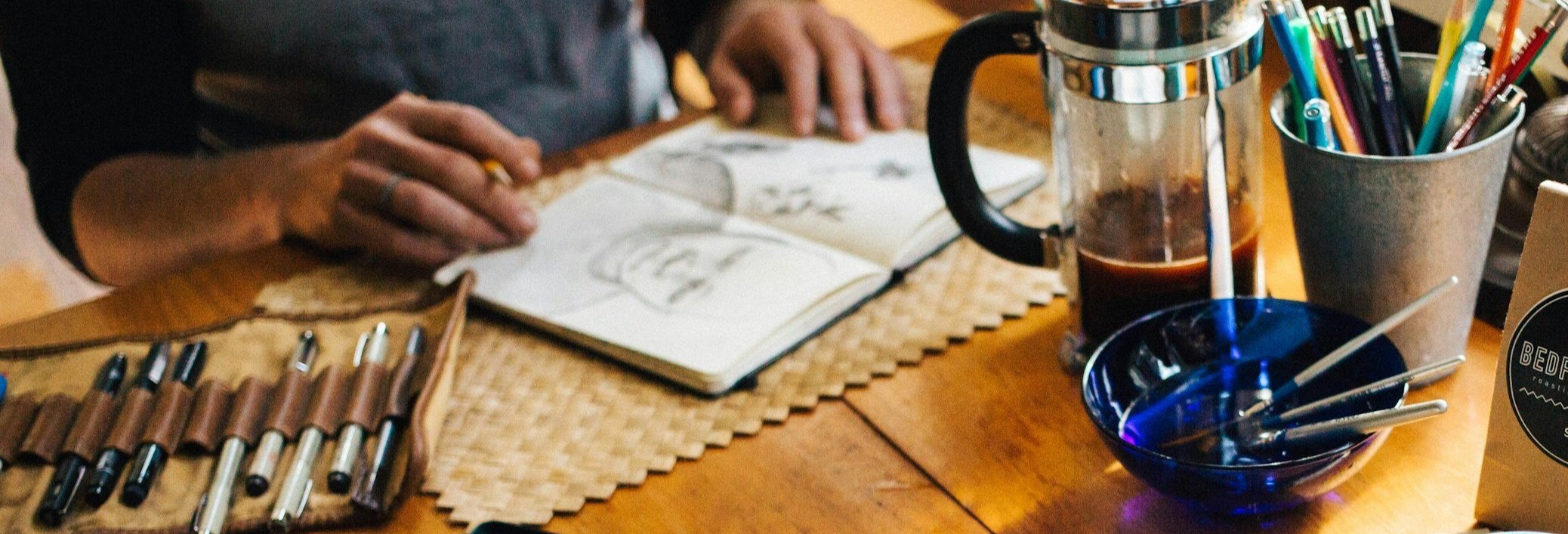
My approach to leading people and processes
Team foundations
I believe in leading with empathy. Learning what motivates each individual on the team, what their strengths are, and where they need to grow. Then positioning them to work that gives them the best chance to succeed.
Some key ingredients I’ve found to build successful design teams:
Hire/grow well rounded generalists: I look for people who are willing to proactively work beyond their role when needed to get things done. AI/ML tools are helping facilitate this more than ever.
Maintain alignment on purpose and “the why”: People need to understand why we’re doing the work and why it’s important to our customers and the business. It’s my job as a leader to ensure this is clear and create space and safety to challenge it.
Create an environment focused on growth. My team members have a growth mindset and know that helping others grow makes us all stronger and more successful.“The strength of a team is each individual member. The strength of each member is the team.” - Phil Jackson
Empower and inspire. I take a coaching role, challenging work through questions, leading by example and constantly looking for ways to inspire the team and individuals to be their best.
Right people, right place
When balancing team roles/responsibilities, I’ve found these four principles and questions to be very effective.
Subject matter expertise. Who is best positioned to succeed based on the work at hand and relative strengths?
Growth opportunities. Who’s growth goals best align with the work and how might they be paired with one or more team members they can learn from, hands-on?
General capacity. What does the team’s overall capacity look like? What trade-offs may need to be negotiated before kicking work off?
Fungibility. How can we ensure we have good fail-over if someone has a long vacation, gets sick or leaves the team?

Process: Understanding over perfection.
Right-sizing
When approaching a new problem or opportunity space, I get alignment across leadership and any team involved on answers to the following questions. This informs our approach including how much discovery we need before jumping into design exploration and prototyping.
Who are our key stakeholders and how will decisions be made?
How much evidence do we have already? And, how much do we need to reach confidence to invest in this opportunity (based on estimated ROI)?
What are our key assumptions and what’s the best way to challenge/test them?
What do we know about the current market dynamics and how might that impact our strategy/approach along the way?
What do we NOT know that might derail, distract or change our scope?
Credit https://pascalsatori.com/
Process principles
There are several different processes that can be leveraged depending on business goals, scope, desired timelines, etc. I’ve worked in Agile (Kanban, Scrum, Lean), Waterfall, and hybridized models. Across them all, I’ve found that these key principles apply and level up chances for success.
Start Together, Finish together (cross-functionally). And error on the side of over-communication along the way.
Challenge Assumptions and Biases (especially confirmation bias). Avoid locking into a solution too soon.
Share Early and Often. Insights, ideas, low-fi designs, mocks, prototypes. Don’t be precious or wait until it’s “presentation ready”.
Democratize Data. Share it, talk about it, and hypothesize together across disciplines. Designers need to be knee-deep in this process.
Democratize Empathy for the customer. Involve other disciplines and roles in all customer/users research, especially engineering partners and leaders.
Always Be Learning. Embrace mistakes but don’t repeat them. Cross-functional retrospectives are possibly the most important ceremony to do consistently.

Methods. Tools in the box.
A few of my favorites
A planning canvas can be set up in a virtual whiteboard tool like Miro and facilitated with remote, cross functional teams. It’s a great way to pull together a diverse teams current understanding of a problem space.
Me and members of my team have also used it to re-frame a top-down ask so that we’re very clear with stakeholder what we’re doing and why before jumping into a new project.
Assumption mapping. Doing a cross-group assumption mapping exercise is super helpful in aligning on what key assumptions lack evidence and need to be researched in some way to validate desirability, feasibility, or viability before kicking off work.
I’ve facilitated in-person and virtual assumption mapping sessions using Miro and other virtual white boarding tools.
Narrative storyboards. Using illustrated narratives can help bring a customer story to life and make a visceral connection. Often combined with a larger customer journey map, these more bite sized narratives can help frame the problem or solution space.
Additional methods & tools
I’m experienced in the following and have facilitated myself, led teams to plan and facilitate and trained team members on using them.
Any and all AI tools. I’ve recently started treating these tools as a member of the team.
In-person and remote structured brainstorming/ideation and prioritization
Miro, Zoom Whiteboard, Figjam, Figma
Customer journey mapping
Moderated and unmoderated UX research
Flow mapping and information architecture
A/B and multi-variant test planning






